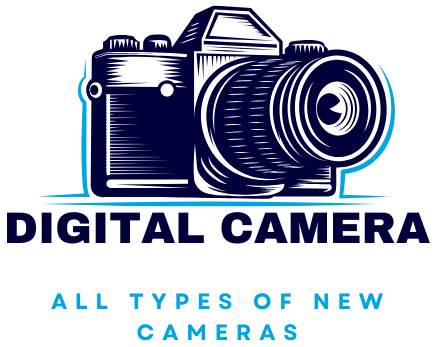What camera settings help with snowy or bright photography scenes
| We have chosen the BEST photography digital camera with bargain price Now just for you ! Click HERE to check our different photography digital camera for your need. Team chose the BEST Digital Camera |
What Camera Settings Help with Snowy or Bright Photography Scenes
when venturing out into snowy landscapes or bright sunlight, photographers frequently enough face unique challenges that can affect the quality of their images. Exposure, contrast, and color accuracy can all be impacted by these environments. In this article, we’ll explore the essential camera settings you need to capture stunning snowy or bright photography scenes effectively.
Understanding the Challenges
Bright scenes, especially those dominated by white snow, can trick your camera’s meter into underexposing the image. This occurs because the camera tries to balance the brightness,resulting in a photo that appears too dark. Here are some common challenges you might face:
- Overexposure due to bright light reflecting off snow
- Loss of detail in highlights
- Color casts that affect the overall image quality
Essential Camera Settings for Snowy and Bright Scenes
To achieve captivating photos in snowy or overly bright conditions, you should adjust your camera settings accordingly. Here are the key settings to consider:
1. Adjust Your Exposure Compensation
Use exposure compensation to counteract the bright surroundings. Start with a positive compensation value of +1 to +2 stops to prevent underexposure.
| Lighting Condition | Exposure Compensation |
|---|---|
| Bright Snowy Landscape | +1 to +2 stops |
| Overcast Snowy Day | +0.3 to +1 stop |
| Sunny Day without Snow | 0 to +0.3 stops |
2. Use Manual Mode (M)
To have full control over your settings, switch to Manual Mode. This allows you to fine-tune your aperture, shutter speed, and ISO for the best results in bright conditions.
3. Set Your Aperture Appropriately
A smaller aperture (higher f-stop number) like f/8 or f/11 can help maintain sharpness, especially if you’re aiming for landscapes. This setting increases depth of field, ensuring both foreground and background are in focus.
4. Shutter Speed Considerations
In bright scenes, you may need a faster shutter speed to avoid overexposure. A shutter speed of 1/500s or faster is recommended, especially in direct sunlight.
5. ISO Settings
Keep your ISO setting low (ISO 100-200) to minimize noise. In bright conditions, you can afford to keep it low, ensuring your images remain sharp and clear.
Practical Tips for Snowy and Bright Photography
Here are some additional tips to enhance your photography experience in snowy environments:
- Use a Polarizing Filter: This filter cuts glare and enhances colors, making your snowy landscapes pop.
- Check Your Histogram: Regularly monitor the histogram to ensure you are not losing detail in highlights or shadows.
- Custom White Balance: adjust your white balance manually to counter the cool tones of snow.
- Bracketing Shots: Take a few bracketed shots by varying the exposure settings to ensure you capture the best possible image.
Benefits of Mastering Snowy and Bright Photography
Understanding camera settings for snowy and bright conditions can significantly enhance your photography skills. Here are a few benefits:
- Better Image Quality: Improved exposure control leads to clearer,more dynamic images.
- Increased Creativity: mastering these settings allows you to explore different styles and compositions in winter photography.
- Enhanced Skills: Becoming adept in various lighting conditions develops your overall photographic ability.
Case Studies: Prosperous Snowy Photography
Let’s delve into two case studies highlighting successful snowy photography practices:
Case Study 1: National Park Landscapes
A photographer visiting a national park during winter captures breathtaking landscapes by utilizing the recommended settings. By adjusting the exposure compensation to +1.5 stops and using a polarizing filter, the vibrant blues of the sky and the crisp whites of the snow created stunning contrasts.
Case Study 2: Urban Winter Scenes
A street photographer documents a snowy day in the city.By using manual mode and a shutter speed of 1/1000s, the fast movement of pedestrians in the bright sunlight is frozen in time, all while keeping the exposure consistent and maintaining detail in the snow.
First-Hand Experience: Tips from a Photographer
As an avid photographer, I can attest that the secret to captivating snowy or bright photography lies in experimentation and practice. Here are some pointers from my own experiences:
- Always keep your camera ready! snow can create unexpected beautiful moments.
- Don’t hesitate to adjust settings on the fly as lighting conditions change throughout the day.
- Explore different angles and perspectives to bring out the unique features of the snow and your subject.
Conclusion
Capturing the beauty of snowy and bright scenes requires an understanding of your camera settings and how they interact with the environment. By utilizing the right exposure compensation,aperture,shutter speed,and ISO,you can create stunning images that reflect the beauty and wonder of winter photography. Embrace the challenge and experiment with your settings to discover what works best for your photographic style. With practice and patience, you’ll find yourself mastering snowy and bright photography in no time!
| We have chosen the BEST photography digital camera with bargain price Now just for you ! Click HERE to check our different photography digital camera for your need. Team chose the BEST Digital Camera |
